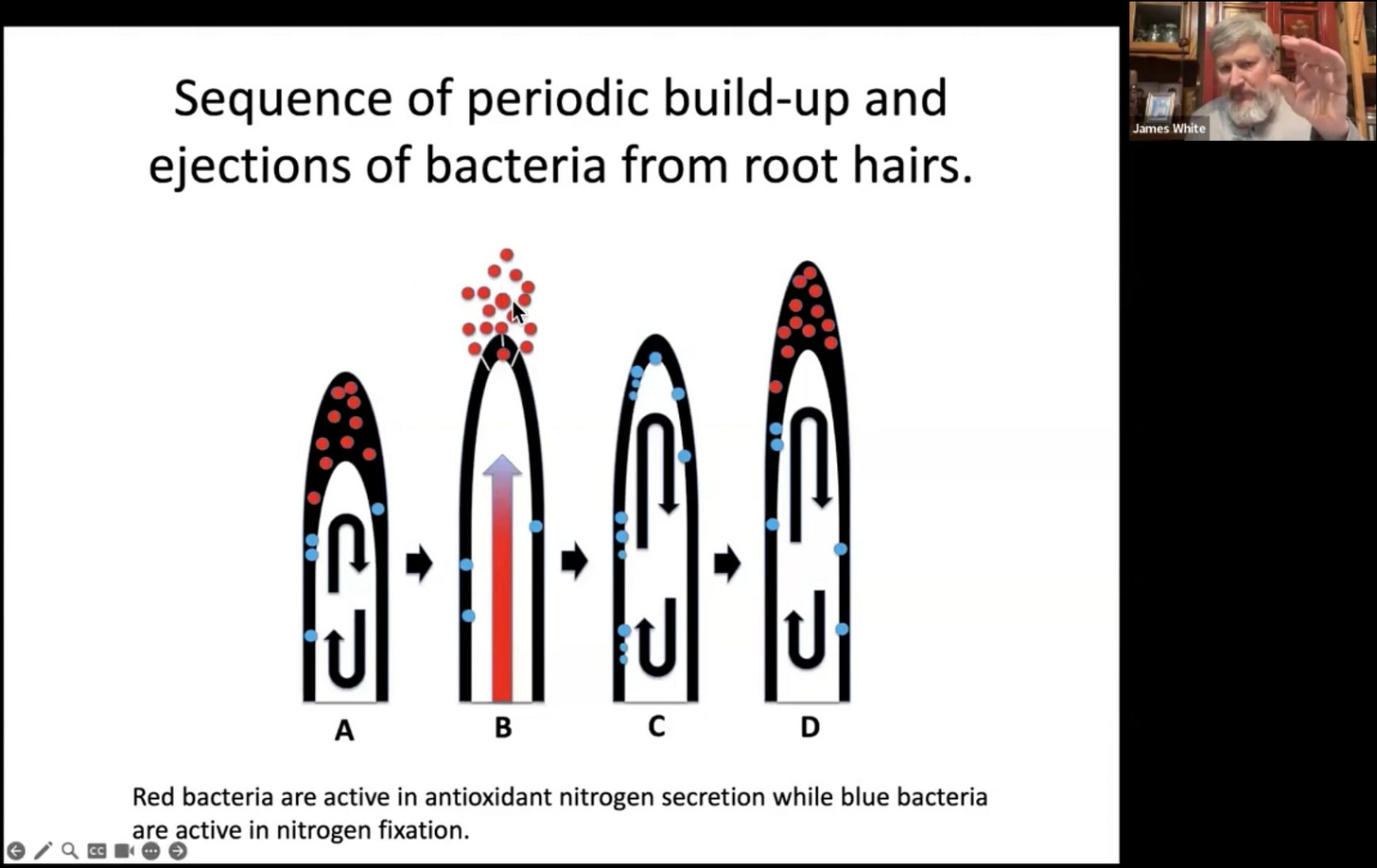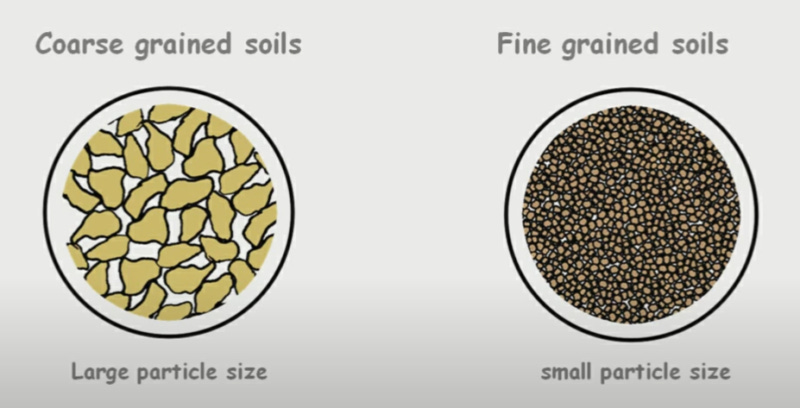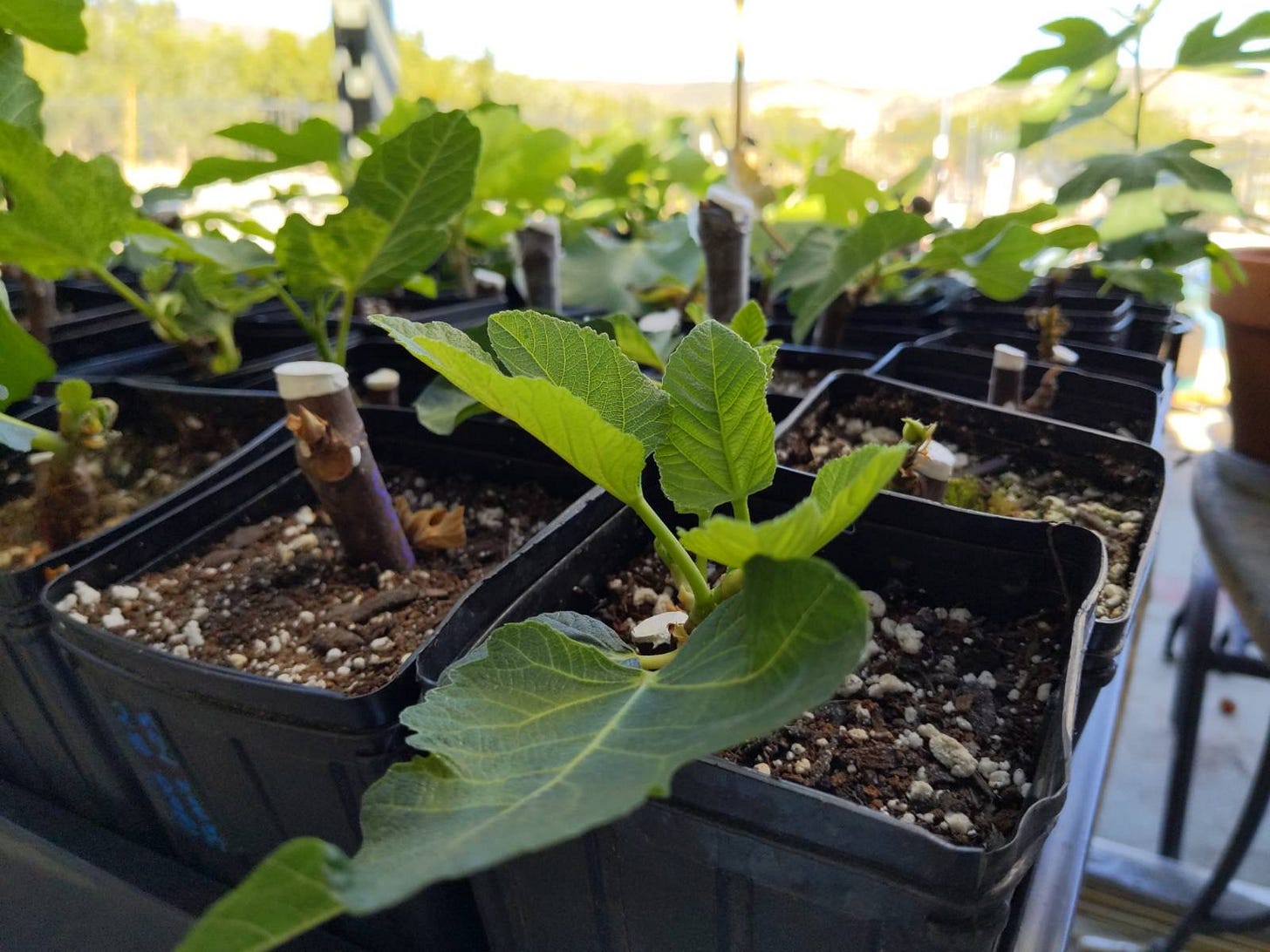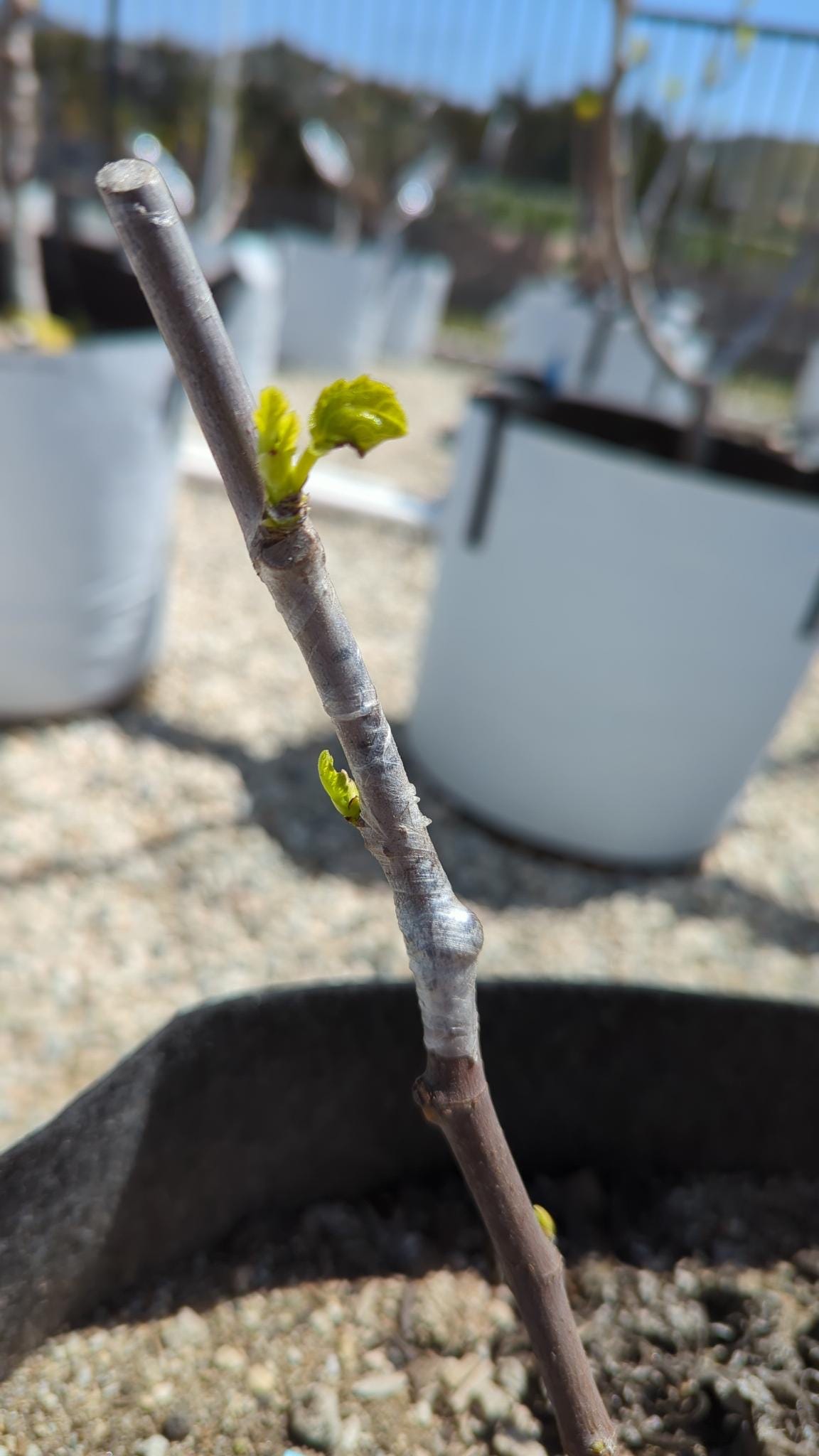What Causes Fig Cuttings To Rot?
Got a brand new cutting you want to succeed? Why did past cuttings seem to root but then failed? What do the fig researchers recommend? This is the post on potential reasons for rot while rooting…
As we get into cutting season people are often asking, what are the best rooting methods? The primary thing most want to avoid is rot. It’s a heartbreaking thing as a new fig grower when you lose your expensive cuttings to rot. It happens to everyone, no one is exempt, (if they say they are, they are LYING 🤥 or haven’t actually rooted very much.) It’s one of those things that just happens sometimes, even with the best of methods. Are there things we can do to help prevent it? Yes, there are. Let’s read on!
Some cuttings, you can do all the wrong things and they will still somehow root and grow into a tree. The resiliency! Other cuttings, you do just a little thing off and it’s over, kaput, dead in the water. With fig cuttings, it doesn't matter until it matters. So what are some of these things that can matter? Well, I can only break it down from my personal experience, so here it goes…
Once you have cut a limb off of a tree, the breakdown process starts. It no longer has its lifeline and its cells are now starting to die off without ongoing replacement. To stop this, we need to slow this process down or we need to get it to form roots as soon as it can so it can regulate itself and have flow again. Without this, it will eventually turn into a moldy, desiccated stick.
It is important to understand that the presence of microbes is not causing the rot. Rot happens because of dying tissue, the tissue is no longer viable and then certain microbes come in to do their nature-given role of breaking down the dead tissue. So to avoid rot, we want to do things that prevent tissue damage and death and contribute to life instead.
These are common things that can cause harm to plant tissues:
🌡️ Temperature extremes. This can happen before the cutting has even been taken from the tree with frosts and freezes, it can happen in shipping, and it can happen in storage. Sometimes it happens under grow lights that are too hot and close, and sometimes it happens from heating mats under the cuttings. Cuttings can effectively be steamed by a heat mat that is not being regulated enough or that doesn’t have a barrier between it and the bottom of the pot. Another overlooked one is the temperature of the water used to wash cuttings, hot water is not needed. Just know that freezing the cutting will damage it, and heating the cutting too much will also damage it.
🧼 Washing and disinfecting cuttings. Some wash and disinfect cuttings before planting them. However, this can remove essential microbes that promote root growth. Research by Dr. James F. White and others shows that plant roots absorbing and expelling microbes is directly linked to root hair elongation and growth. These bacteria are thought to excrete hormones inside of the roots that stimulate their growth. Seeds that have been treated with antibiotics or sanitized with 50/50 bleach & water solutions do not grow well because they need the built-in microbes to function, particularly with roots. Cuttings also need microbes to initiate and grow roots.

Growth spurts of root hairs at tips from internal microbes producing growth hormones of ethylene and nitric oxide and then the microbes are expelled. Here is a video with it explained in more depth. I linked it to start where he is directly speaking about root hair elongation at 27:18 which he talks about for about 8 minutes up to the start of the Q&A, but the entire presentation is very good and has tidbits throughout. So please feel free to start it from the beginning if you like. (I recommend changing the playback speed if it’s too slow for you, use the gear icon in the video and click on “Playback Speed” to do that.) ↓↓↓
(There are a lot of YouTube videos with presentations by Dr. James White that contain more details on how microbes relate to plant nutrition and health. I highly recommend them and have found them fascinating! He also has a number of published papers that you can find on Research Gate.)
Plants are filled with microbes, so to kill off fungi or bacteria with disinfectant is essentially killing off a part of the plant itself. Because molds and other microbes are ubiquitous in our environment, let alone in the soil itself that the cutting is going into, disinfecting will not prevent mold from forming on something that is decomposing. You’re eliminating the plant’s natural microbes and allowing whatever is present in the environment to settle on it, such as wild yeasts in the air, whatever is on your hands or counters, or bacteria from foods in the refrigerator if stored. The most that can be gained is removing a contaminant on the surface that doesn’t belong there which may mold and this can be done with a simple washing.
The speed of microbial colonization on the root system is very important to create resistance to root diseases according to John Kempf. When this beneficial microbiome is not carried through on the cutting or in the rooting mix, the newly rooted plant now needs to recruit microbes from the soil to colonize the root surface and develop a healthy microbiome. This process takes time and may require the contribution of more sugar and energy through the root system from root exudates, depleting the cutting. The more sanitized the system, the more time this takes.
[Picture a plant putting its sugars into the rooting mix through its brand new tender roots and then the proper microbes are not there to eat it and help the plant. What is going to happen to the sugary goo the roots are sitting in, especially if our rooting mix is not aerated enough?Sugar + little air + wild yeasts from the environment = ethanol or alcohol = root death]During this window, there is an opportunity for disease development in plant tissues when the root system is not immediately colonized by disease-suppressive microorganisms. Fungicide treatments amplify this susceptibility by removing beneficial microbes.
Plants have a waxy cuticle layer that serves as a protection against environmental stressors and regulates transpiration. Some may use harsh disinfectants or detergents which damages this tissue making it more permeable. Others may scrub the cutting too harshly which can leave scratches in the surface. Even common things like bleach or hydrogen peroxide can cause a certain amount of breakdown of cellular structure and can interfere with the plant’s ability to absorb nutrients when used in excess. Bleach itself breaks down into a salt which is harmful to plant material. These also harm any exposed soil microorganisms, disrupting the important balance that stops rot.
🧪 Rooting hormone. Too heavy of a dosage can dehydrate or burn the plant's stems leaving it open to rot and decay. Overuse of rooting hormone can lead to excessive root growth, which can cause the plant to become unstable or even die. What the hormone is actually doing is suppressing the plant's ability to differentiate between root, stem and leaf cells. When exposed to auxin, the plant's cells essentially "forget" they're able to make a variety of different types of cells, and just start replicating root cells, which are the most basic type. Figs typically do not require rooting hormone at all. However, if you are going to use it, use a very low dilution to avoid damaging the cutting.
It should be noted as well that some brands of rooting hormone contain fungicides or other ingredients that could disrupt the microbiome both on the cutting and in the rooting mix.
💨 Oxygen starvation. This is one of the most common causes of cutting death. Cuttings and roots need air to survive. Air is needed for plant respiration, which is essential for growth and nutrient uptake. If the rooting medium used is too fine and dense, it can cause asphyxiation because any tiny air gaps are taken up with water engorged material which is unable to dry out fast enough to allow for air to come back. ProMix is commonly recommended for rooting cuttings by some growers. However, its purpose is for starting vegetable seeds, not cuttings. As such, it is very fine and not aerated enough for rooting cuttings. It is meant to hold more water to stimulate seed germination. So for cuttings which do not require that amount of water retention, more perlite or pumice needs to be added to create enough air pockets so that watering is not an issue. Having good air and water flow is essential to cutting health and contributes to good microbial growth as well.
A little disclaimer: With all of the above said, I want to be clear that I am not saying you can’t grow a cutting doing any of these things — a lot of people do. I’m sure some reading this are thinking, I do that and I don’t have any problems. I know some who disinfect the heck out of their cuttings and still get a plant out of them. And that’s okay, in fact, it is great, I’m glad you have success!
What I am saying though is that a lot of people also have problems because of doing these things. When people have rotted cuttings, usually it can be linked directly to one or more of these practices. Just because it can work in spite of doing it, that doesn't make it best practice. These can create unnecessary learning curves and require a person to adapt with workarounds, such as weighing pots and using syringes to water, when in reality it is so much simpler.
The point is to help people see it is not black and white and there are other aspects to consider especially if you have a particular growing ethos, ahem *organic and natural right here in the house*, that you want to stick with. Use the appropriate things from the start and you’re golden.
What can we do instead?
It’s simple: Use a properly aerated rooting mix and regulate moisture to ensure humidity around the cutting according to the climate of your area. That is pretty much all that is needed…
But if your punctilious nature is crying out and you would like more details to correspond to the above, well see below ↓ just for you.
Choose cuttings that are as lignified (hardwood) and freshly cut as possible. This helps because the cutting surface is less tender and vulnerable. The fresher a cutting is, the more vitality it should have and typically has increased chance of rooting. Have a general awareness of the weather conditions of the location you are buying from. Is it late enough in the season for dormancy there? Are they cutting this year’s growth that may not be lignified yet? Remember, cuttings start at the top of a branch with newest growth and work down to older wood. So you are likely to get young branches no matter who you buy from. In fact, the majority I see sold are semi-lignified and these can work just fine. Timing is more about dormancy for storage needs and allowing as much time as possible for lignification without cold damage, as many sellers are from back east.
Root them as soon as possible. ⏳ If storing in the fridge to tide them over, make sure they are put in a plastic bag with a paper towel to absorb any condensation and keep them away from the sides or any known cold spots. Make sure your refrigerator is in the normal range of 35-38°F. Below 35°F for prolonged periods can cause damage. Note that green cuttings (softwood) and semi-lignified cuttings do not store as well.
According to Advances in Fig Research and Sustainable Production, some researchers store cuttings this way: “Cuttings are tied in bundles of approximately 50, each wrapped with a damp cloth or folded in a slightly moist sand or perlite medium to preserve their moisture content. The bundles are then placed in plastic cases and stored in cold storage (4°C [or 39°F]) at 80–85% relative humidity until planting. Under these conditions, cuttings can be stored for 1–2 months.”
Try not to buy cuttings when outside temperatures are more extreme. Cuttings can cook in a hot mailbox in summer 🥵 or freeze in winter. 🥶
If the ambient room temperature is warm enough, heat mats are not needed. If using a heat mat, make sure any temperature probes are measuring at the point of contact at the base of the pot to ensure it doesn’t get too hot. Remember, water conducts heat so wet rooting mixes may get warmer than the outside of the pot and you want that probe right in there. Place a towel or other barrier between the heat mat and the pot to help buffer the heat. Figs root best between 72-78°F, though can root fine when ambient temperatures are at 65° or above or 85° and below. It will take longer to get going below 72°, which can increase chance of desiccation or rot, and you will have more risk of rot when you’re getting over 79° with a heat mat.
Cleaning your cuttings is a choice, not a requirement. If choosing to clean your cuttings, gently wipe them with something soft, use cool water, and a mild soap. Recognize that microbes 🦠 are essential to plants and that disinfecting or aggressive cleaning can cause more harm than good. I personally do not clean my cuttings at all unless they have something obvious on them. Using microbial inoculants instead of disinfectants can help to produce a much larger root system while preventing root rot.
The only time I could see where disinfectant might be useful is if you are shipping cuttings and expecting a long transit, or storing cuttings for a length of time. Both involve enclosed moist environments that could contribute to mold growth. But doing this also could impact rooting success later. Many hobbiest sellers do not disinfect their cuttings and they are received just fine in most cases. If this is used, I would choose something very mild and would not soak them in it.
Last year, I received some cuttings that I forgot about. I opened the package over a month later and they were all moldy. However, the cuttings themselves seemed intact, the bark wasn’t slipping off and they weren’t soft yet. So I soaked them for a few days in water with a fig root ferment I had previously made. Not only did all of the mold go away, but they all rooted successfully and quickly. No disinfecting was required. This agrees with the research showing that more microbes are needed for controlling fungal issues, not less.
Keep in mind that figs root very well without rooting hormone. I never use it myself and have sufficient success. If you’re just really feeling a boost is needed though, try using seaweed extract which naturally promotes growth and is a root stimulant. Ferments can also be made using thicker fig tree roots that boost rooting speed. Either of these can be used at a high dilution in a pre-soak.
⚛️ If you must use rooting hormone because you are just a chemical fiend, fig researchers have found that the best results were observed with 2500 ppm IBA + 2500 ppm NAA or 1000 ppm IBA + 1000 ppm NAA combinations over other concentrations, according to Advances in Fig Research and Sustainable Production. Other researchers had success with 1000 ppm IBA over other concentrations as well. Success was measured by dry weight of growth within a certain period of time. Results were mixed as for whether it improved rooting performance overall.
It seems as though liquid hormones are less risky than powdered or gel hormones based on what other growers have said. I know when I experimented with powdered hormone, I had a lot of rot. So go with liquid if this is your choice.
Use proper rooting mixes for tree cuttings that allow for sufficient air-water-soil composition. Researchers have found that a 1:1 combination of peat and perlite was most effective for rooting fig cuttings. (Advances in Fig Research and Sustainable Production.) It really pleased me to read this because it agrees with what I found myself independently and have recommended. (🎯 Hey hey, nothing like that feeling every once and a while for a lowly hobbiest! 🤓) Another mixture that was found successful, when comparing sand, perlite, sawdust, peat, marc, or wood chips, was a combination of 30:70 perlite:sand*. Others have really liked a 1:1:1 mix of vermiculite, perlite, and peat.
* If using sand, please be sure to use a coarse sand appropriate for gardening. Some sands have a high salt content and must be avoided, others are too fine, such as playground sand. The most commonly available sand sold at Home Depot and Lowes that is good for this application is washed all-purpose builders sand.Also be sure to not firmly pack in your rooting mix, put it in loosely to remain “fluffy” and do not press it in hard around the cutting.
Some feel fungus gnats contribute to root rot and cutting losses. 🦟 Fungus gnats feed on fungus that grows on organic matter, their larvae can feed on plant roots. The best way to eliminate them for indoor growing is to eliminate organic matter from your rooting mix. This means no compost and no commercial potting mix which often contains compost or other natural fertilizers that are decomposing. These can come pre-contaminated with fungus gnat eggs from sitting outside in store yards. Focus on using a mineral-based mix instead. The three mentioned above are great for that. There is also this article here and this one here which talk about other things that can be used. I highly recommend giant Butterworts/Pinguiculas in your rooting area, a type of carnivorous plant that is easy to care for and eats fungus gnats. I have never needed to use Gnatrol or mosquito bits with the methods mentioned and do not recommend them unless absolutely needed as they may upset soil microbial balance.
Some find rooting outdoors ☀️ during the growing season is easier than indoors. Being outside exposed to the elements eliminates a lot of the issues experienced in an indoor environment. For example, there is usually better air flow, potting mixes can dry out faster, fungus gnats are blown away, temperatures do not need to be regulated, no heat mats, and no grow lights. There is also better microbial exposure outdoors. Just make sure to wait until it is warm enough and to keep them out of direct sun while rooting.
If rooting is just not your thing, try grafting. Many who have had issues rooting end up loving grafting as an alternative for cutting propagation.
It is important to understand that we can do everything right and still end up with rotted cuttings. So much more is involved than just rooting technique. Variety and nutrient stores also play a role in success. The hormones present in the cutting itself can have a bearing as well. The location on the tree from which the cutting was taken has an effect on results. If or how a seller stored the cuttings prior to shipping can make a difference. There are so many things outside of our control. So don't lose heart if you had some losses!
If you’re someone who supplies cuttings, do your best to ensure your trees have access to all of the nutrients, particularly calcium and micros. Nutrients stores of certain trace minerals can affect how quickly something germinates. Keep the biology healthy and present with mycorrhizae and other microbes so that your plants are uptaking minerals. This is important especially as we get closer to dormancy and cutting season so that these nutrients are being stored and are at the ready for new growth.











Great article! Which brand of seaweed extract would you recommend and a dilution rate as I’d like to give that a try this year.
Thank you so much! This is the first time I have seen someone writing about the microbiome on fig cuttings and James White's research. In my last round of fig cuttings, I rolled the cuttings in my finished compost mixed with some soil from beneath an established fig tree to try and inoculate it with some good microbes. I am just a few days in, so we'll see how it goes.